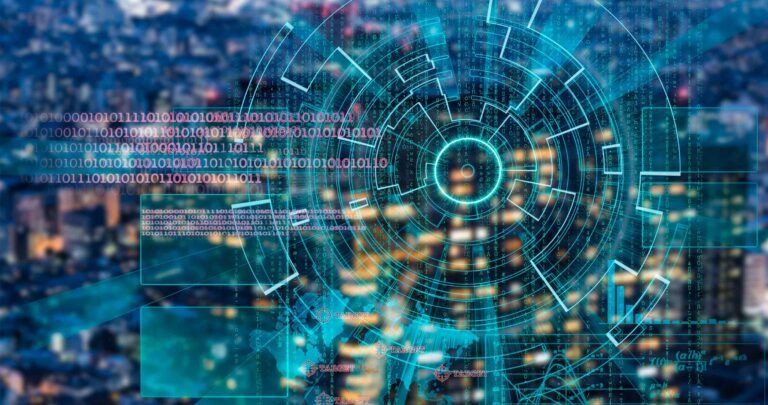Your Ultimate Guide to the Top 4 R Project Ideas in 2023

Are you looking to build a lucrative career in any data-related field? If your answer is yes, gaining proficiency in the R programming language should be your first step. R has multiple advantages, including performing data analysis of a project (such as fake news detection) and Machine Learning (ML) operations (such as regression, classification, and data wrangling). What’s even more significant is that several tech giants—think Meta, Google, and Twitter—are choosing R to meet their analytical business goals. However, learning the R programming language isn’t an easy job as it involves experimenting with different R project ideas. If you are a data enthusiast or aspiring to make your mark in a data-focused field, this blog covers the top four R project ideas that will boost your mastery of this particular language.
Why are R Projects So Important?
R projects use the R programming language to analyze data and make a decision on whether to develop the project. But, before understanding the importance of R projects, let’s first understand why the R programming language is important in developing a project. R programming is useful because:
- It is both open source and free to use
- It consists of more than 18,000 useful and well-documented data science packages
- It is compatible with a wide variety of operating systems
R projects are important because you can use them to perform major tasks in the following cases:
- Credit card fraud detection
- Uber data analysis
- Customer segmentation
- Wine-quality prediction
Why is ‘R’ Popular in Data Science?
In the data science landscape, R is popular because it’s one of the major tools used to solve complex challenges that require the ability to predict and model unknown data. Furthermore, the popularity of R is also because of its many benefits:
- As R consists of over 18,000 specialized packages, it gives professional liberty to select their preferred packages, such as the RODBC package, Open DataBase Connectivity Protocol (ODBC), and the ROracle package.
- Professionals can use R to efficiently execute deep learning or ML tasks, including supervised, semi-supervised, unsupervised, and reinforcement learning.
- Wide variety of ML strategies, such as classification, regression, clustering, natural language processing (NLP), and artificial neural networks (ANN).
R is also popular because it consists of highly specialized R libraries which are used in data science across industries. Some of the libraries include:
- OenoKPM, which stimulates the dynamics of carbon dioxide generated during the fermentation of alcoholic beverages
- fHMM for fitting hidden Markov models to financial data
- paleopop, a paradigm for coupled niche-population paleoclimatic modeling that is pattern-oriented
- ibdsim2 simulates those parts of chromosomes that family members share
- rSHAPE simulate the evolution of haploid, asexual populations
R for Data Analysis
Data analysis is the first step in a data science project, and R in data analysis can help you to perform following tasks:
- R is used to clean, wrangle, and visually explore website data
- R is used to test hypotheses, extract patterns, and arrive at actionable insights
- Statistical analysis and impressive visualizations are two areas where R typically outperforms Python, its primary ‘challenger’ when it comes to programming languages
In addition to R’s standard multipurpose packages (such as readr for data entry, tidyr for data cleaning, and ggplot2 for data visualization), the language includes several specialized modules that may be used to solve a wide range of practical challenges when it comes to data analysis:
- fAssets to look at financial assets and make their models
- mdapack, which are a set of tools to analyze medical data
- GEOmap, which is mostly used for geological and topographical mapping
- AeRobiology, a computing device for aerobiological information
- galigor, a set of packages for marketing on the Internet
- Lingtypology for mapping and linguistic typology
- nCov2019 for the purpose of investigating COVID-19 statistics
How to Start R Projects
You need to perform the following steps to start R projects:
Step 1: Identifying the Issue
The first step to start any R project is to identify problems that you want to solve with data analytics.
Step 2: Data Collection
In this step, you need to capture and collect data, structure it, extract meaningful insights from it, and store it in one place.
Step 3: Data Cleaning
Data cleansing removes redundant or irrelevant information from a data set. Consistency in outcomes can only be achieved by careful data cleaning.
Step 4: Data Analysis
Here, you need to analyze data to discover hidden trends and patterns from the collected data. Moreover, you should classify the patterns and trends obtained and figure out how the data works.
Step 5: Data Modeling
Data modeling includes two distinct parts—one is reserved for training and model building while the other is used for testing.
Step 6: Model Deployment and Optimization
You optimize the data models in terms of both accuracy and efficiency to guarantee the best possible outcomes.
READ MORE: Top 10 Inexpensive Ways to Learn How to Code
Top R Project Ideas and Topics
Learning data science in R requires you to build sophisticated R projects. We’ve enumerated some of the major ideas that you can implement to design R projects.
1. Credit Card Fraud Detection
You can use R programming to build a program that detects credit card fraud. Multiple ML algorithms help to identify genuine purchases from fraudulent ones. This credit card fraud detection project employs a variety of analytical tools, including decision trees, regressions, and artificial neural networks. The data set ‘card transaction’, which includes both fraudulent and legitimate card transactions, is used by this fraud detection system. The process includes importing the transaction data set, analyzing, modifying, and organizing data, and modeling, fitting, and executing the algorithm.
2. Segmentation of Customers
One of the best-known R project ideas is customer segmentation. It’s a well-known example of unsupervised learning. Businesses use a segmentation process to figure out who their customers are and how to reach them. In this approach, the customer base is segmented according to similar market-relevant traits such as age, gender, interests, and purchasing patterns. K-means clustering is an algorithm that helps in customer segmentation by dividing the unlabeled data set into these various clusters based on age, gender, demographics, and purchasing patterns.
3. Wine Preferences and Prediction
By making use of predictive modeling, data analysts find out how to improve wine quality. In order to evaluate the quality of a particular wine, the research will make use of the ‘red wine’ data set. The purpose of this research is to gain a deeper understanding of the chemical characteristics of red wine. To begin, a prediction of the wine quality is made based on the input data. Then, the wines are categorized based on the exceptional features they possess. The data is then searched for a one-of-a-kind relationship that exists and then displayed in the charts. This is one of the R project ideas that can help you enhance skills in data visualization, data exploration, and regression modeling.
4. Uber Data Analysis
Uber’s data analysis project uses data visualization techniques to understand difficult statistics and make more informed decisions. In this process, professionals use R programs such as ggplot2 to derive meaningful insights from users’ data and deliver an accurate prediction of customer behavior, such as who would use Uber’s trips. The study tracks different parameters, such as the number of trips that take place in a day, a month, and so on. As a result, professionals can figure out the average number of passengers Uber can have in a day, the busiest times when more people look for rides, and the day of the month when most trips are taken.
Why Learn R in Data Science
There are some compelling reasons to learn the R programming language and its utility in data science.
- R programming helps you in performing basic tasks, such as data gathering, analysis, and delivering useful results
- Placing data into a program manually to get output is hard, takes time, and can lead to mistakes. Hence, employing R can reduce manual work, speed up and enhance efficiency, and improve results
- R comes with a number of built-in tools and packages that can be used to analyze different kinds of data sets, such as lists, vectors, and matrices
- As R consists of functions like ‘else’, ‘for’, and ‘while’, it makes the language a common and easy-to-understand tool for data scientists
Discover Our Popular Data Science Courses
Emeritus, in collaboration with well-renowned universities, offers multiple data science and analytical courses that can help you learn how to extract meaningful insights from complex data and help businesses to make informed decisions. You can enroll in online coding courses offered by Emeritus to learn R programming language and polish your data science skills.
By Riku Ghosh
Write to us at content@emeritus.org






